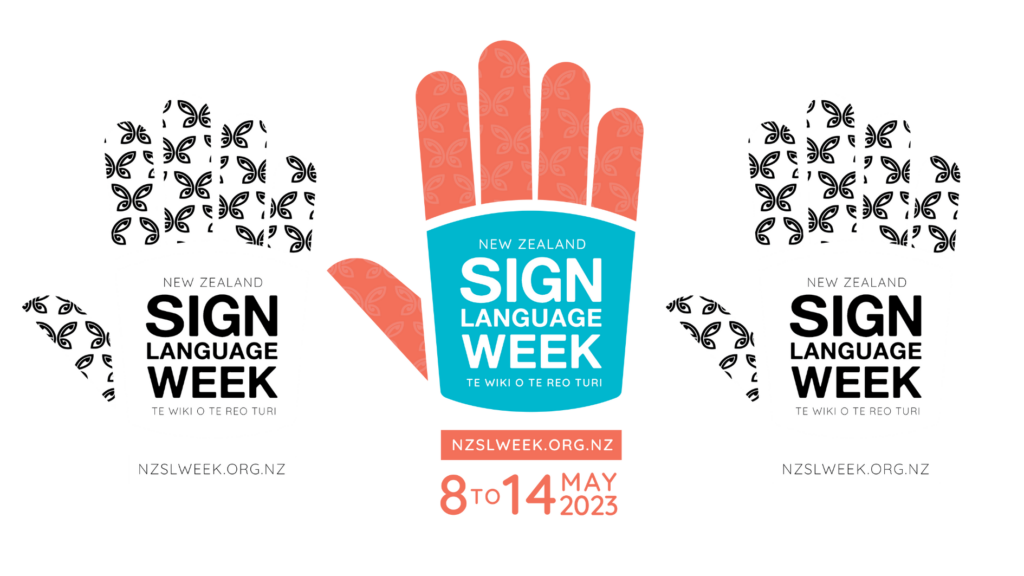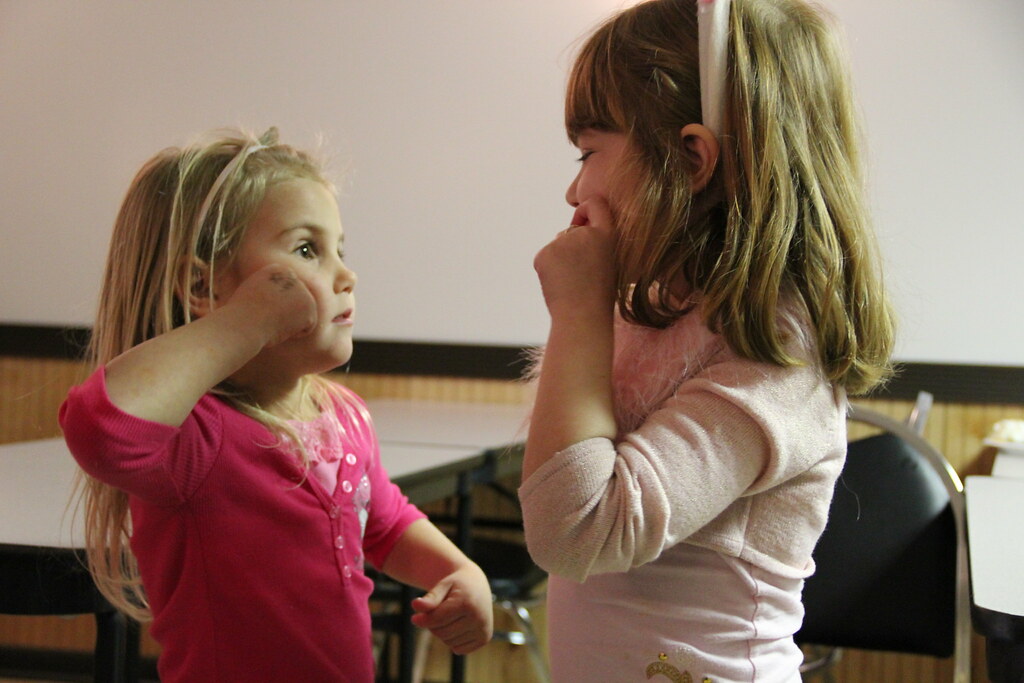This week is NZSL or New Zealand Sign Language Week. Many of the books for young children featuring signed languages or Deaf characters or by Deaf authors – though much loved – do come to us from overseas. So to celebrate NZSL week and our local talent and resources, Jac Minchin takes a look at what the local community is creating, or utilising, and how you and your tamariki can have a go too.

NZSL is by nature a language best experienced visually, or sometimes adapted via tactile means for the Deafblind. As a manual language it uses hand shapes, movements, positions and orientations in space to convey meaning, combined with expressive facial grammatical cues, and often body postures, too. NZSL is a full, rich and animated language, and an official language of Aotearoa New Zealand.
Capturing sign in books is challenging, especially in a way that will capture the attention of young readers. You can absolutely draw signs; there are fantastic alphabet cards available, cute flash cards, a comprehensive dictionary – all with clear static drawings and directional arrows to indicate movement. If you want to share a book with a young child in NZSL, however, then apps and online videos are becoming more and more widely available and the media of choice for many families on their journey to learn the language.
Deaf kids want to read stories that are popular with their classmates and siblings too. Hearing kids will love seeing a familiar story told in a brand new way.
You can sign a book yourself if you are confident enough in the language, or incorporate a few key signs while reading in English, Te Reo Māori or whichever spoken language you use if you’re just beginning to learn NZSL. It’s not all or nothing. Does it need to be a special niche book about Deaf kids? While representation is vital and there is definitely not enough, especially in the small local market, it’s important to know it’s okay to sign any book you like. Deaf kids want to read stories that are popular with their classmates and siblings too. Hearing kids will love seeing a familiar story told in a brand new way. A poster in a waiting room, a picture book, a recipe book – anything can be read with your child in NZSL!

When reading to your child in NZSL you need to position yourselves so that your little audience can see your hands and face. Enough light to see your hands and face clearly is a must. Sitting opposite each other is a really good choice. What if your young tamariki is determined to crawl onto your lap for cuddles or to turn the pages of the book? That’s fine too, you can switch to signing with their back to your tummy and your arms around them, signing onto your child’s body instead of your own. Sign ‘eat’ to their mouth if they aren’t looking at yours, for example. You can pick up their hands and help them form a sign, make it a game! The same things that we instinctively do when teaching spoken language to children, slowing down, repetition, exaggerated expression, short simple sentences and so on, are all just as possible in signed language. A clip, peg or stand can be handy for holding the pages open so your hands are free. Don’t worry if they don’t pay attention to every sign right off the bat; kids don’t pay close attention to every word uttered in spoken language either but they do get the idea. If you’re reading regularly and they’re getting plenty of opportunities to see signs and try them out for themselves, then they will pick them up. Many small children find it easier to form signs than words at a young age. They already have all of their fingers but they don’t have all of their teeth yet and the muscles in their hands are a little easier to control than those in their face.
There is a wonderful collection of Ready To Read story book apps with NZSL, written story and illustrations together. These can be enjoyed quietly if your child needs some down time or you can sign along or use them as a resource for learning literacy. They are great for your child to practice their receptive language skills and for exposure to different people signing.
Kids who use NZSL naturally need and want that down time in their language too
If it’s NZSL on TV you’re looking for then the brand new show The Kids of Kōrero Lane on Hei Hei is likely to be a winner as it features Deaf and hearing kids signing. Kids’ shows in signed language are important for Deaf kids and others whose first or primary language is signed. Hearing kids get to relax and enjoy a wealth of quality content on screen. Kids who use NZSL naturally need and want that down time in their language too, particularly if they are too young to watch spoken language media with subtitles because they are still learning to read. Hearing children will love it too; being introduced to new ideas and ways of expressing yourself can be fun. Can you extend that seemingly passive language exposure though? Absolutely! Ask your child to tell you about what they watched, if they’re learning their first signs they might try to reproduce some from the show. If they are more confident you might get a signed retelling of the episode and they might enjoy adding detail, describing the characters and props.
just like spoken languages are different all around the world, so are signed languages
Are all signed languages the same? No, just like spoken languages are different all around the world, so are signed languages. They form naturally in our communities, include elements of the local culture and values, and reflect the history of the people who use them. So the wealth of ASL (American Sign Language) content online is totally pointless for Kiwis then? No, not entirely. There are elements of Deaf culture which are common across signing communities. The latest season of Sweet Tooth on Netflix includes some ASL. You will see the distinctive little up-and-down flutter of a wave to get someone’s attention before signing, because it doesn’t make sense to call out vocally in signed languages. We use visual or tactile methods of attracting attention instead. There are familiar language features like role shifting, classifier use, and facial grammar. Filmed in New Zealand while our borders were still restricted because of Covid, two of the children playing hybrid characters in the show are native signers from the Deaf community right here in Aotearoa, along with the on-set ASL consultant. So there are role models for young Kiwis. The other kids cast were completely new to signing. The children play hybrid animal kids who have been learning their ASL from a dictionary, without an experienced teacher, which definitely doesn’t make for ideal learning conditions but they are trying their best to survive in the midst of a crumbling society. (The show is best suited to older kids, i.e. teenagers).
Kids are fantastic storytellers themselves. There are some delightful young content creators with an online presence, you could follow ‘NZSL with Carter’ on Facebook for some adorable energetic little stories about his life experiences updated frequently. Maybe your young storyteller could try telling their own signed stories, learn to sign a book with you or print, practice and colour their favourite sign from the NZSL dictionary, available online. They might like to draw themselves signing in a picture or make clay models forming signs, reinforcing the details of a new sign in their minds. There are so many NZSL resources out there but the great thing is you already have the most important tools of all – your own hands!

Jac Minchin
Jac Minchin is Deaf and disabled and a passionate advocate for accessibility in the arts and leisure industries, especially own voices led projects. They learned to fly a plane before driving a car, live in a villa with more books than cobwebs, make art and have three children and one grandchild.



